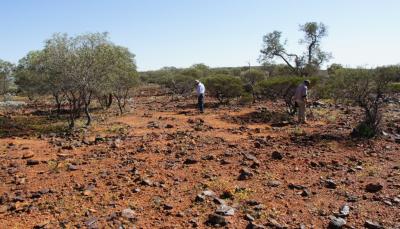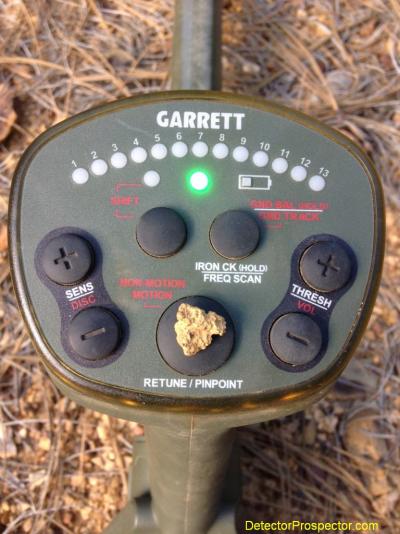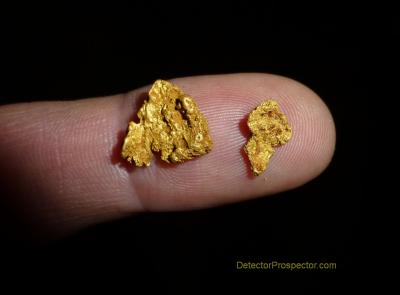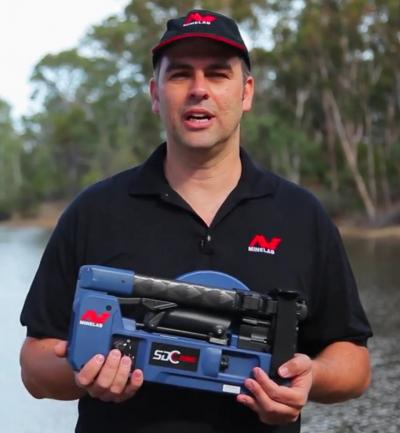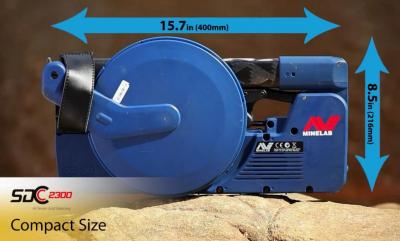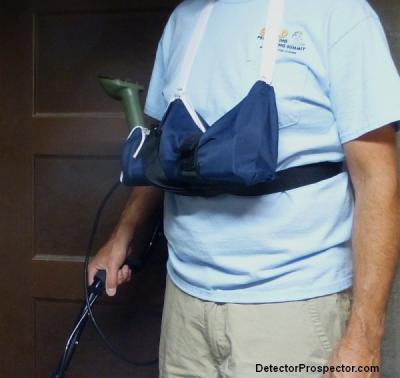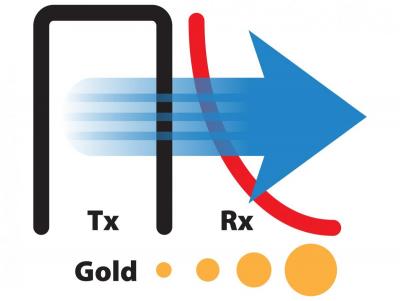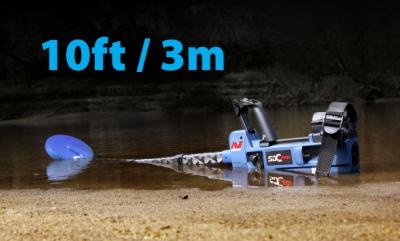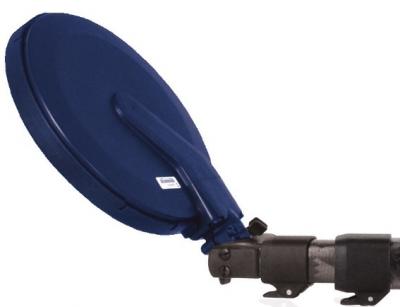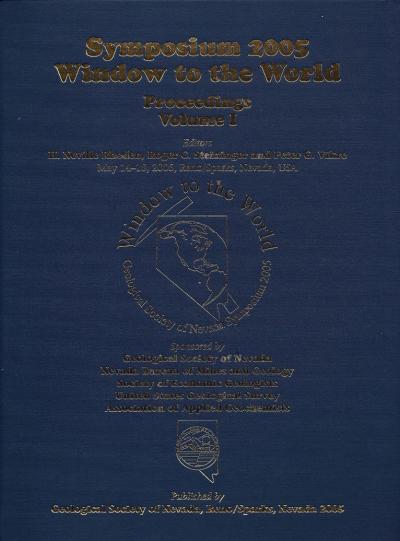-
Posts
19,807 -
Joined
Content Type
Forums
Detector Prospector Home
Detector Database
Downloads
Everything posted by Steve Herschbach
-

Laugh at The Total Newb
Steve Herschbach replied to moxford's topic in First Texas - Bounty Hunter, Fisher & Teknetics
I am a big fan of practicing but starting out you need to find a place with WAY LESS TRASH. And I would stay away from the turf. Best spot would be a sand lot or fresh water beach. A volleyball court is perfect or something similar. You want easy digging and most places like that get detected so should not be tons of targets. You have a detector designed for finding gold nuggets and so the basic idea is dig everything. Iron discrimination is prone to calling gold nuggets iron and so missing them. Therefore the iron discrimination on the Gold Bug 2 is designed to work on small targets and to be conservative. Big iron and steel will often read good. The basic theory is a gold nugget will give a good, clean, solid response. Ferrous items will either be eliminated entirely or more often will break up. It helps to hit the target from various angles and at different speeds. But frankly you are not using a Gold Bug 2 to find big stuff. You need a place with less of that and you need to be looking for tiny stuff, like small aluminum. The target that most closely mimics small gold responses is small aluminum or small lead. Pretend these are small nuggets - everything else is junk. The only tone response on the Gold Bug 2 in all metal is the pitch increases with the target strength, so big targets squeal, small targets have a softer tone. Some people ignore targets that squeal as big junk and that works until you get over a big nugget. In iron disc it is all about the target being clear and distinct, or breaking up. If you are just getting a few hot rocks no big deal. If they are present on every swing you need to set the mineral switch either for higher levels of mineralization, or use less sensitivity, or both. This with proper ground balancing should lessen the hot rock responses. The goal is to try and get a smooth, stable threshold, even if it means less depth. Running in iron disc will often eliminate hot rocks, but again it will get less depth. Experts learn to hear the difference between many hot rock sounds and zippier nugget sounds. Bottom line is you picked a really tough spot to learn. Give yourself a break and find a sand lot to start out in or hit the road and go bullet detecting. You may not have gold nearby but you can go detect just about anywhere and find bullets. And since bullets and shell casings sound just like big nuggets they are good test targets going aluminum detecting in town or bullet detecting out of town is just like chasing gold except the targets are usually shallower and stronger than a typical nugget signal, which tends to be more mellow. Hope this helps. Stay with it, it will make sense in time. It is just like starting with a new musical instrument - everything is foreign at first. -
Yup, I have done it many times. Just one example a couple years ago, I picked 98 small nuggets of a hillside 75 feet above a creek with a Gold Bug 2. I should have dug two more - would have if I had known I was that near 100! Anyway, we set Chris and George up there with a highbanker and they got around three ounces of gold from the location.
-

Minelab SDC 2300 Video on YouTube
Steve Herschbach replied to Steve Herschbach's topic in Minelab Metal Detectors
I honestly have no idea. Unlike the ATX this unit is aimed squarely at prospecting and I do not know if salt water testing was even part of its development. It does have a salt setting; no doubt for salt flats and probably sufficient for salt beaches but in the water is a big unknown. I also am very confident of the waterproof integrity of the ATX. My Minelab CTX 3030 however even though billed as waterproof seems less robust than the ATX and there have been numerous leakage issues. I therefore shied away from putting it to the test in Hawaii. When I get my hands on the SDC 2300 on the beach use is high on my list of things to do, but I am less inclined to get seriously underwater with a $4000 detector until I know more about just how waterproof it really is. But I have high hopes for it hunting micro-jewelry up on the towel line. EMI resistance is a whole other issue in Hawaii, and the jury is out there also on the SDC. Brochure now available for download at Minelab SDC 2300 Color Brochure -

Minelab SDC 2300 Video on YouTube
Steve Herschbach replied to Steve Herschbach's topic in Minelab Metal Detectors
Official List Price US$4875 with Minimum Advertised Price (MAP) of $3750 -
Hi delnorter, The problem with me is I have too much detecting stuff in my head and so can wander off on tangents, getting too deep into details that may confuse rather than enlighten. That is why I like speaking for free - nobody can say they did not get their moneys worth! Seriously, detecting is my passion and if I can turn just one person on to the real enjoyment of prospecting and detecting for gold than I will have paid back in just a tiny way all the help and guidance others have given me over the years. So thank you!
-
I can't imagine that being good for White's - seems like a real coup for First Texas. I used to count the companies I looked to for genuinely new detectors for the mass market as being Compass, Fisher, Garrett, Tesoro, and White's. Then Compass went out of business but along came Minelab so it changed into Fisher, Garrett, Minelab, Tesoro, and White's. Then Fisher went down but became one with Bounty Hunter and Teknetics as part of the First Texas family. I was skeptical at first but time has proven that to be a good thing. So the "Big Five" changed to First Texas, Garrett, Minelab, Tesoro, and White's. Sadly Tesoro so far seems content to just remix the past. I think they build great detectors and I have a lot of respect for the folks at Tesoro, but I have to say I no longer look to them for anything really ground-breaking. And while it still may be a bit early to do so it appears to me that XP is an up and comer if they can do more to expand their limited product line. I have never owned an XP product but I am keeping an eye on them. The "Big Five" in my mind at least appears now to be First Texas, Garrett, Minelab, White's, and XP. With the sad loss of Dan Guyer and now Carl Moreland going over to First Texas I now have to wonder where White's is headed. The V3i was in the oven already when Carl first went to White's, so from my perspective the company has done nothing new since with the exception of the TRX pinpointer. Everything else has been rebaked versions of older platforms. The main issue is the marriage to big circuit boards in big boxes. I see detectors in a pod weighing under three pounds as the future and White's is getting seriously behind in that regard. Great company, great products, great people, but at risk of getting left behind unless some major changes are forthcoming. First Texas has great stuff under development and for once seems to be waiting to get it "done right" before going into production. Getting Carl on board may very well be a part of that and I am excited to see what the future brings. 2015 is shaping up to be a major milestone in metal detector history.
-

Minelab SDC 2300 Video on YouTube
Steve Herschbach replied to Steve Herschbach's topic in Minelab Metal Detectors
Some good conversation going on at http://golddetecting.4umer.net/t18956-sdc2300-minelab-s-new-mid-range-detector#180462 JP, I have to admit to being very skeptical of the SDC 2300 when I first heard about it. As I have learned more about it I am seeing now it may perfectly fit my particular nugget hunting mindset. The fact is I look at my GPX 5000 as my elephant hunting gun. When I am using it I am set up for and mentally looking for large gold. Despite my best intentions last summer I never did make a serious go of using my GPX 5000 to look for small gold. I even got a new coil for that task, and never did end up using it. The reality is that when I look for small gold my mindset changes and I tend to grab detectors other than the GPX 5000 that I feel are better suited to the task, and that usually means a hot VLF detector. This despite my knowing the GPX will get small gold a VLF cannot. I remember our little go in Oz with the Gold Bugs and you with the GPX and Sadie coil. Chris and I got more little bits, but you pulled up a couple nuggets that outweighed all our little bits together, and which the VLF detectors would not see. There is a magic gray zone between a hot VLF and a GPX 5000 set up hot with a small coil where I am guessing the SDC is targeted and shines. Just a solid suspicion so far backed up with what you are saying. I can see the picture now. I will leave my 18" mono coil on my GPX 5000 where it belongs (you know I love that coil!) and when I want to switch gears I will just grab the SDC 23000 which is all set to go on the smaller stuff. I am also planning some pretty hardcore backpack in and hunt stuff and the SDC in the rucksack, no external battery, cables, harness, or even headphones needed, is going to fit the bill nicely. Water hunting is just a bonus but knowing me it will see that also. Micro-jewelry is a particular interest of mine. I guess I have gone from being very skeptical to cautiously optimistic at this point. Honestly the only issue for most people is going to be the price. A real issue for the majority of people who never pay for their detectors by using them. If I had to lay out that kind of cash and not have confidence I could find the gold to cover the outlay it would make me think twice. In my case it will be a race to see how fast I can find two ounces of gold with the SDC by running out and hitting some old patches post haste before others get over the natural tendency to hold back and wait for results. I have got far too few detecting hours under my belt in the last few months but that is about to radically change. Obviously we all like a machine that can pull big nuggets up real deep. But what about places where bedrock is only inches deep and highly mineralized? There are no big nuggets down in there so no risk of missing them. Like this place I mentioned earlier in the post which I am sure JP you would love to hit with the SDC. -
Chris was nice enough to take me out to some old areas he has stomped in the past, and I figured it would be a good test for the Garrett ATX. Chris had mentioned they were some of the worse mineralized areas he has hunted in California. It was just a day trip so not a huge amount of time. Initially it was the typical bullets, shell casings, and steel trash. The ATX handled the conditions with flying colors, running at max gain and ground balancing easily on the soil. Only the very worst location gave the faintest of ground signals, but not enough for me to back the gain off. It was really nice to get out since I have been busy visiting family the last month and now getting ready to leave for Alaska. So thank you very much Chris! The day was topped of we the ATX banging a couple nuggets within a couple feet of each other just before quitting time. I admit I was a bit surprised to see gold at that point! The largest is 1.45 grams and the smaller 0.48 grams.
-

Minelab SDC 2300 Video on YouTube
Steve Herschbach replied to Steve Herschbach's topic in Minelab Metal Detectors
-

Minelab SDC 2300 Video on YouTube
Steve Herschbach replied to Steve Herschbach's topic in Minelab Metal Detectors
Product details on Minelab SDC 2300 at http://www.detectorprospector.com/gold-prospecting-equipment/minelab-sdc-2300-waterproof-gold-nugget-detector.htm Download PDF Brochure Minelab SDC 2300 Product Brochure -

Garrett ATX Chest Mount
Steve Herschbach replied to Steve Herschbach's topic in Garrett Metal Detectors
The coil and rod assembly part numbers are on my Garrett ATX Accessory page at http://www.detectorprospector.com/gold-prospecting-equipment/garrett-atx-metal-detector-accessories.htm -
I did a post a while back about putting the Garrett ATX control box in a backpack for use with an Infinium DD coil on a rod assembly. The post and photos are at http://www.detectorprospector.com/forum/topic/58-garrett-atx-backpack-modification/ Works well but obviously making adjustments to the detector is a pain if need be. So I whipped up this simple chest mount configuration using a broken arm sling I got at Walmart for $10 plus an adjustable strap I had sitting around. Easy, effective, and allows easy access to the ATX control panel. There are all sorts of variations a person could come up with.
-
Well, here it is folks!
-
Thank you for responding Reg. It is good you are here. I think many of us, including myself, carry some baggage from other forums and days gone by. My hope is that with this new forum we can all leave the baggage at the door. A big plus here is you can link to any other forum and mention brands, whatever, as long as it is all done with an eye towards informing and enlightening others. You have a long history in the metal detecting world and I and others respect you a great deal. So how about we all just roll up our shirt sleeves and talk detecting and look to the future instead if the past?
-
Hi Carl, Really good to see you here, maybe your change of circumstances will allow you to hit the forums more? I do believe Reg was running a TDI modified down to about 8uS which is the reason I made that comment. Sadly, it probably is a moot point now. Reg commentary on 8uS TDI - Link deleted since Findmall update broke all old links http://www.dankowskidetectors.com/discussions/read.php?2,21401,21609
-

California Gold Country Mineralization
Steve Herschbach replied to moxford's topic in Rocks, Minerals, Gems & Geology
I expect the only difference on a Gold Bug Pro vs F19 to be in non-prospecting features. For what it is worth I will never not have a Gold Bug 2. In fact I have two of them! -

California Gold Country Mineralization
Steve Herschbach replied to moxford's topic in Rocks, Minerals, Gems & Geology
A simple generality is that you can build a detector to get tiny gold but it tends to give up depth overall on larger gold, and that a machine that does best on large gold at depth will tend to have problems with very small gold. The Gold Bug 2 is perhaps the hottest small gold detector you can buy, but it really suffers for depth on larger nuggets in very mineralized ground. The Gold Bug Pro gives up very little on small gold capability while having much better performance on larger gold in mineralized ground. I would say that overall the Gold Bug Pro has a better balance performance-wise than the Gold Bug 2, with the Gold Bug 2 being a more specialized "sniper" type unit. For me it is not a matter of having one or the other. They complement each other and I own both. Detectors fall along a spectrum of possible performance with a great deal of overlap in capability. Since results are site specific according to ground mineralization and the nature of the gold there cannot be pat answers to the "what is best" question. The answer always is "it just depends". -
Fisher finally put the F19 on their website at http://www.fisherlab.com/Hobby/fisher-f19-metal-detector.htm No new info though and nothing about the price of a non-camo version. I would not mind having one of these to take to Alaska this summer but it is doubtful it will be out before I leave in early June.
-
As always the ground and type of gold will determine the results so there will be lots if questions and debate. My plan is to do what I normally do and get one and put a good hundred hours on the SDC before getting into this versus that stuff. My main goal is to hit some pretty pounded areas I know about to see how long it takes me to get two ounces of gold with the SDC. If it does that to my liking I will be happy.
-
It is always surprising how small a nugget a large PI coil will detect on edge. The problem is the field is more like a hula hoop with a big dead area in the middle. This can really mess a person up digging for the target dead center when the target is on edge. That has caught me a few times. Excellent video Alan, thanks for posting. I have not been able to talk myself into the big ATX coil. Yet.
-
Building a PI that detects small gold is not new. I know you have done it Reg as have others. The issue is - where does a person get one? As far as I know Eric Foster hand building units is as close as we have got to such a detector commercially. 5uS At The Beach Link deleted since Findmall update broke all old links Getting something like this into mass production is the issue at hand. Even then price is going to be a barrier to entry without serious competition. White's could easily do it if they wanted to. Just put out a TDI that adjusts to shorter delay lengths. But they won't. From your perspective why is that Reg? What is the hardest part in producing a hot PI? The coils? Something else? I assume the efficiency of the ground balance circuit gets more critical the hotter a PI gets? You have covered this all very well in the past at http://forums.nuggethunting.com/index.php?/topic/3802-oxymoron-pix-of-invisible-nuggets/?p=25910 This statement you made there would seem to illustrate an issue with the ATX and coil falsing when bumped: "If the sample is taken right at the edge or just when it will allow the circuit to work, generally, the coil becomes hyper sensitive. The upside is the coil will detect smaller stuff, seems extremely sensitive, etc. The down side is it will also be noisy, usually generate false signals if bumped, and will generate much stronger ground signals to deal with." The ATX obviously has a fairly short delay but Garrett is not saying what it is.
-
I am sure we will not be seeing a 1 uS delay; something around 5 uS to 8 uS would be more feasible. From Link deleted since Findmall update broke all old links "High sensitivity industrial PIs which can detect fine gold chain would have a pulse delay of 5uS or less, a much faster pulse rate, a short transmitter pulse and a lower inductance coil, maybe 50uH." See also Link deleted since Findmall update broke all old links Again, the problem is that as you get hotter on small gold the detector also acts more like a hot VLF than a PI. Building a hot PI is certainly possible but dealing with the problems that come along with doing so is a challenge. When I was in Australia we did a little head to head hot VLF vs hot PI. The bottom line is the VLF got the tiniest shallow gold but the PI was able to hit a bit larger stuff deeper than the VLF could see. It takes the whole VLF vs PI thing down to a battle in the top few inches with both having strengths and weaknesses.
-
Minelab does love their acronyms! MPS (Multi Period Sensing), DVT (Dual Voltage Technology), SETA (Smart Electronic Timing Alignment), FBS (Full Band Spectrum) and a host of others. There is a bit of marketing wizardry at work here but the basic fact is this stuff is real and is very often what gives Minelab an edge versus the competition. When Minelab comes up with a new acronym I have found it is worth paying attention to. The soon to be released Minelab SDC 2300 introduces a new acronym - MPF for Multi Period Fast. This refers to a basic pulse technology limitation - the duration between when the transmit (TX) mode shuts off and the receive (RX) mode kicks in. This "pulse delay" is a brief window measured in microseconds (uS) and it allows time for the electronics to settle before the receive phase. It also governs how small a target a PI detector can detect, as during that brief delay the signal induced in the target decays rapidly. If the target signal decays in a time frame shorter than the pulse delay the target is invisible to the detector. Small targets and poor conductors especially are governed by this limitation. The plus side is the signal from most ground, hot rocks, and salt water also disappears during the short pulse delay period, which is what makes PI detectors work so well. Due to a desire to limit the signal from salt water plus limitations in mass production of coils the shortest pulse delay commonly seen in consumer detectors is about 10 uS. Here is what Minelab has to say about MPF: "MPF Technology - MPF (Multi Period Fast) technology incorporates extremely fast Pulse Induction switching between Transmit (Tx) and Receive (Rx) detector signals. Therefore minimal residual transmit signal is present during the receive cycle, enabling clear sharp detection of very small gold." Multi Period Fast (MPF) PI detectors can be designed with a shorter pulse delay than 10 uS, but it takes very tight tolerances and especially very well built coils. This normally requires units to be hand built and calibrated, increasing their production costs considerably. Much of this has been discussed on Tom Dankowski's forum in the past regarding beach detectors and the limitations thereof. This is pure speculation on my part but I do believe the MPF technology aimed at delivering enhanced small gold capability is also partly responsible for the price of the SDC 2300 and the fact the coil is hard wired. Both make absolute sense given what I think I know about building a PI specifically designed to detect small gold. That ability comes at a price, as the detector may have issues also with hot rocks and salt water, but these can be overcome through ground balancing technology. It is a tough nut to crack and produce at the consumer level, and many people at Tom's forum have been wishing for just this kind of detector. The potential exists not only for gold prospecting but micro-jewelry detecting. Anyway, time will tell and hopefully answers will be forthcoming soon. I am in line for a SDC as soon as I can get one and it may fill a role I have never focused on with my GPX 5000 - getting the small stuff. I have seen what a GPX with a small coil can do if properly tuned and in expert hands and I am hoping the SDC is set up to be more grab and go for that type of detecting. That way my GPX remains my elephant hunting gun and I will grab the SDC to clean up the crumbs. It may make previously pounded locations "come alive" again in missed gold nuggets. I have been ignoring the SDC waiting for mid-2014 to get closer and now that it is sneaking up I am doing my usual get excited by new toy thing! More information on the new Minelab SDC 2300 at http://www.detectorprospector.com/gold-prospecting-equipment/minelab-sdc-2300-waterproof-gold-nugget-detector.htm
-
This is some recent information about the ancient tertiary stream channels of California. It updates ideas about where the gold in the channels came from and theorizes about upper extensions of the channels all the way into Nevada. "Speculative upstream continuations of various branches of the Tertiary Yuba and American Rivers enter Nevada near the Fort Sage Mountains, Hallelujah Junction, Reno(?), Little Valley, and Hope Valley (via Echo Pass). One branch of the Little Valley channel can be speculatively traced to the vicinity of Yerington." There are also a few very good maps included that alone make the article worthwhile. Garside, Larry J., Henry, Christopher D., Faulds, James E., and Hinz, Nicholas H., 2005, The Upper Reaches of the Sierra Nevada Auriferous Gold Channels, California and Nevada, in Rhoden, H.N., Steininger, R.C., and Vikre, P. G., eds., Geological Society of Nevada Symposium 2005: Window to the World, Reno, Nevada, May 2005, p. 209-236 Download as a pdf at http://www.ucmp.berkeley.edu/science/profiles/garside_paper.pdf
-

Detecting A Drought Stricken Creek...
Steve Herschbach replied to TRINITYAU's topic in Detector Prospector Forum
Wow, what a beautiful little creek! Pretty nice gold also.

